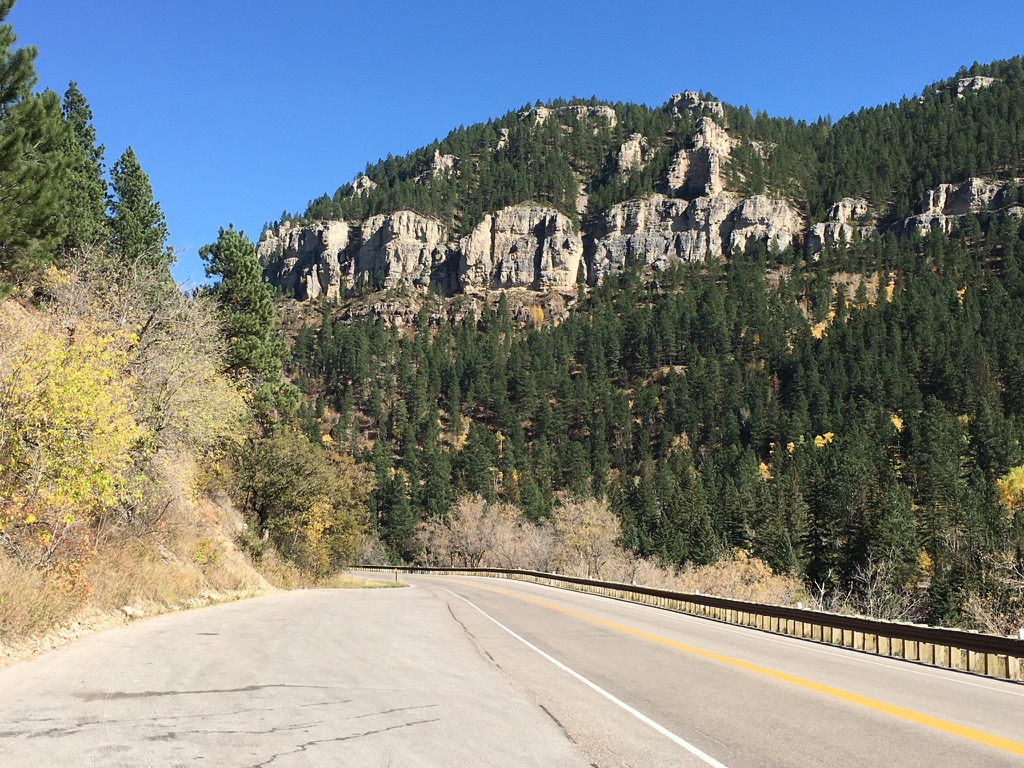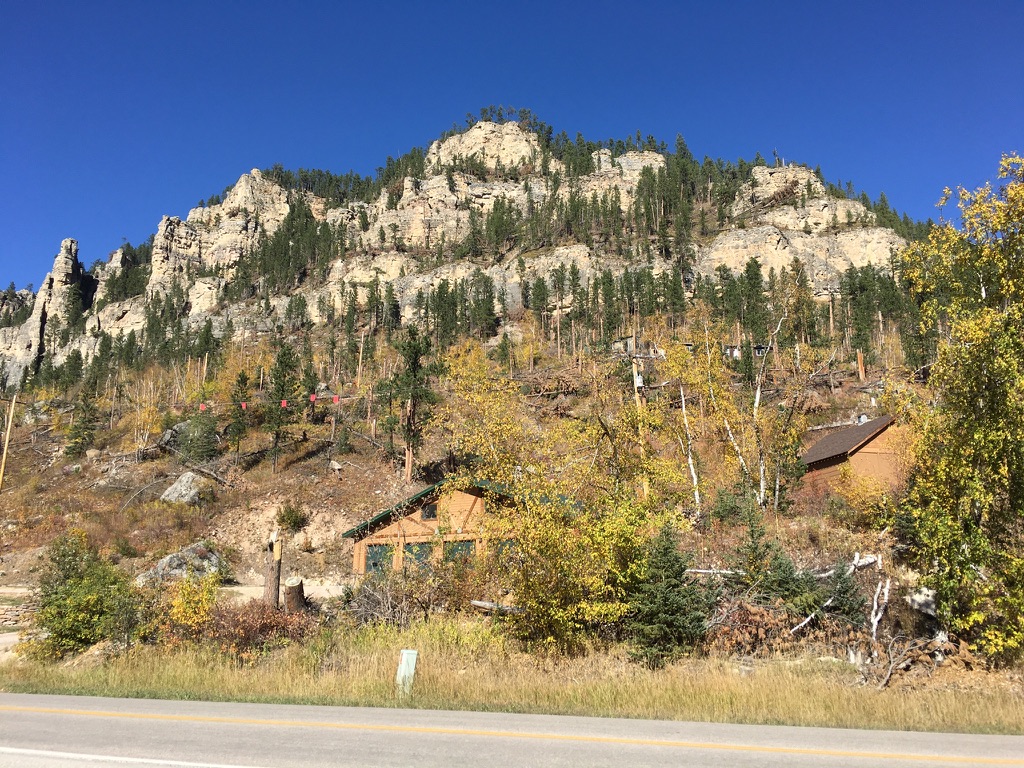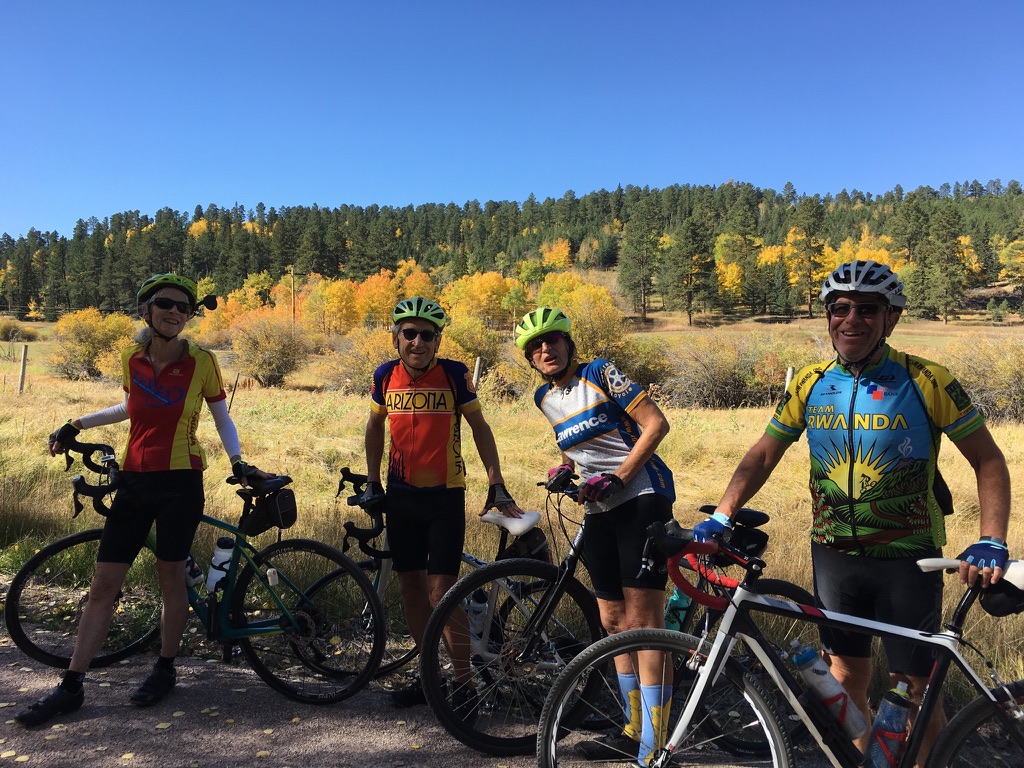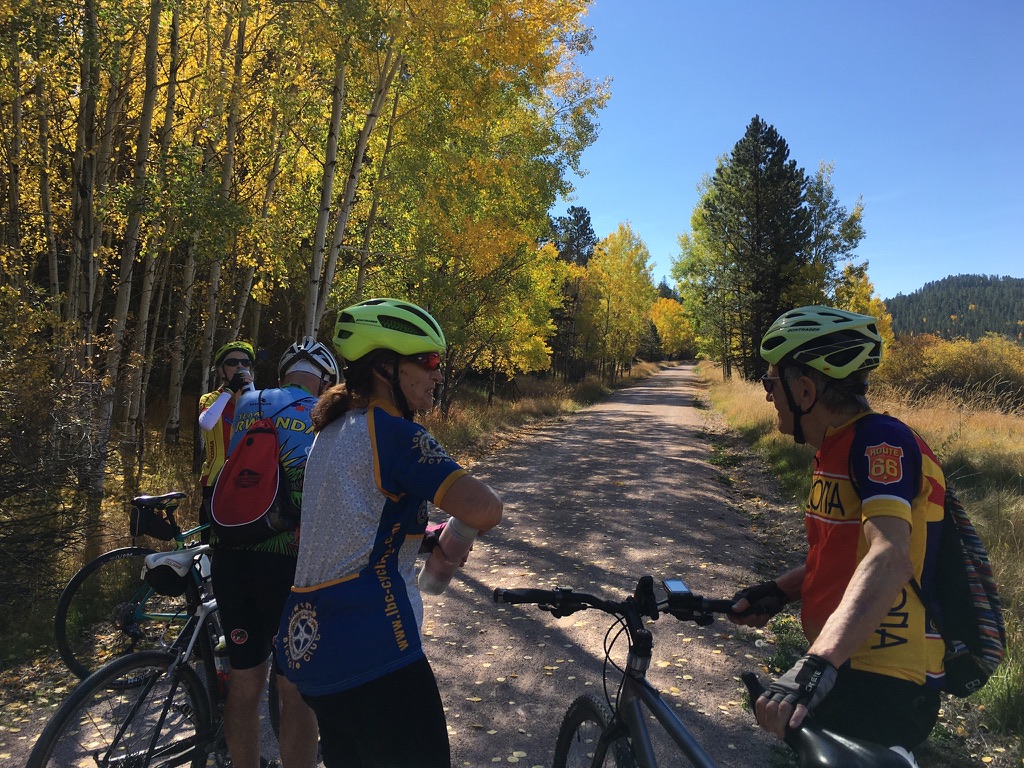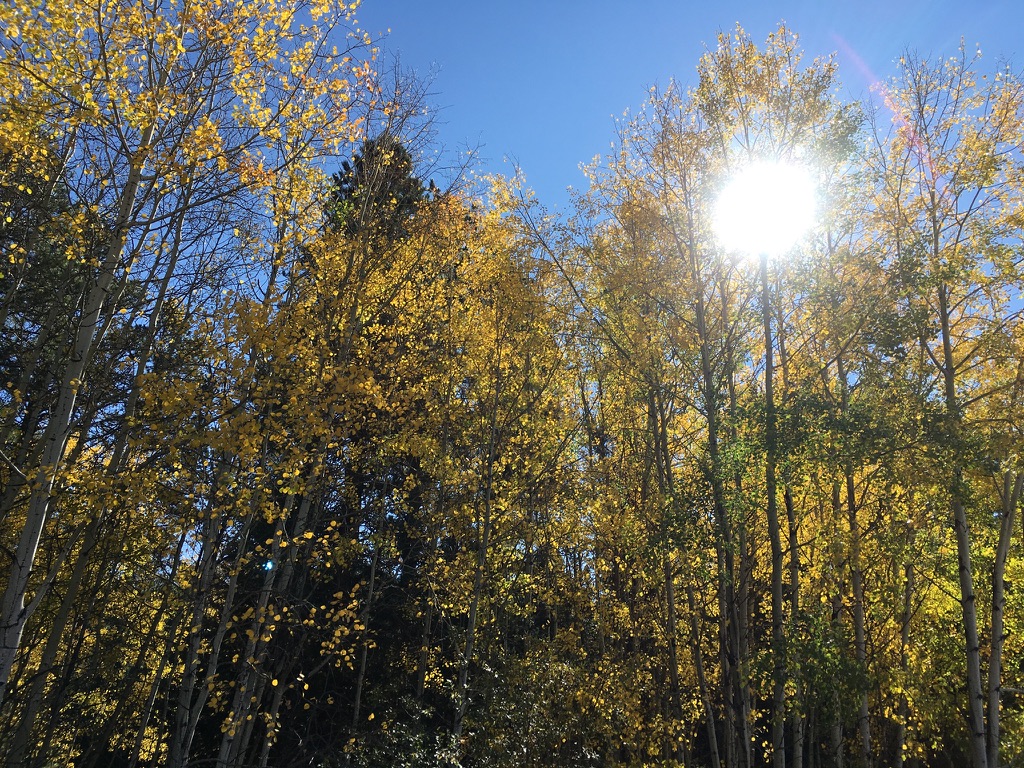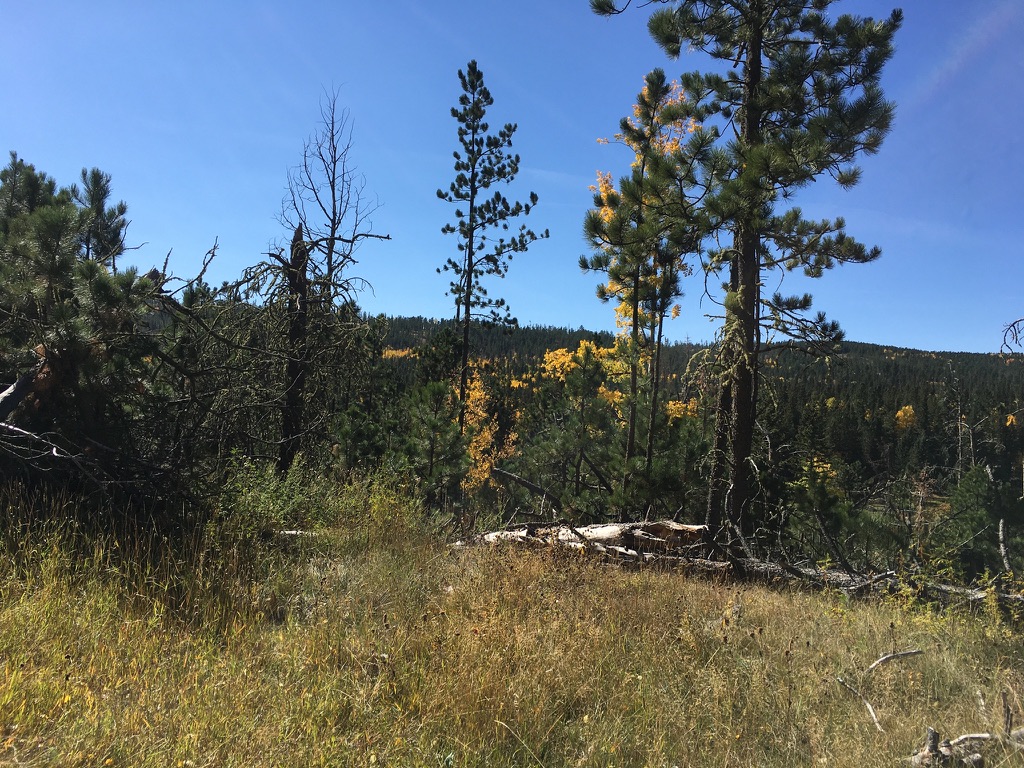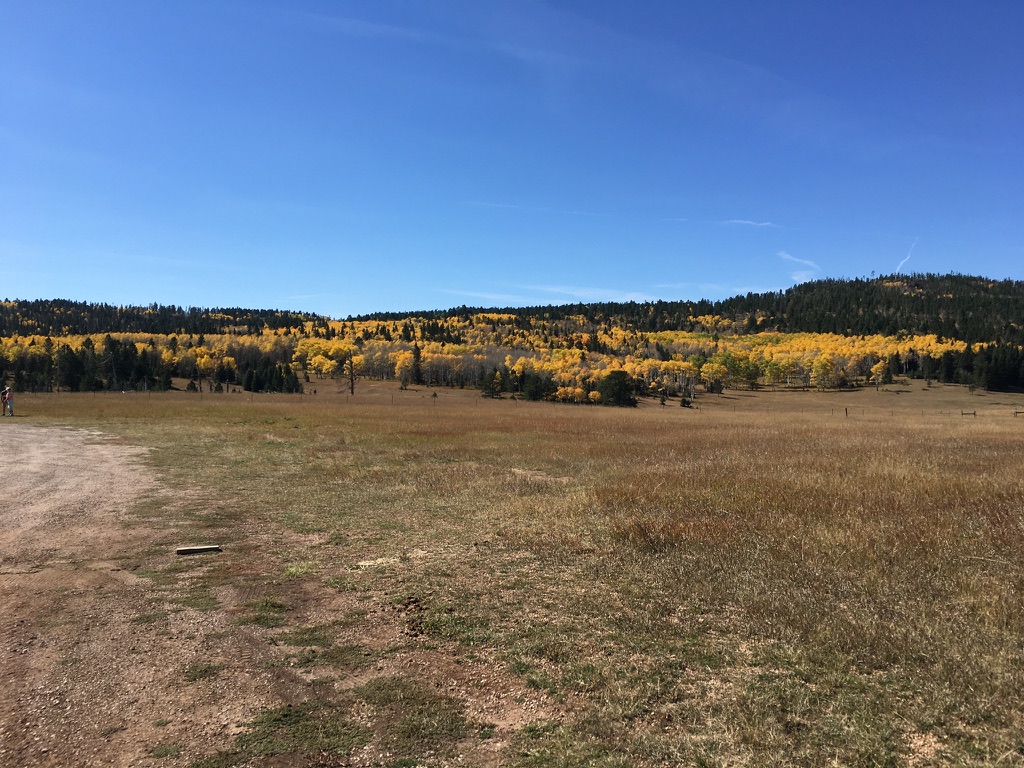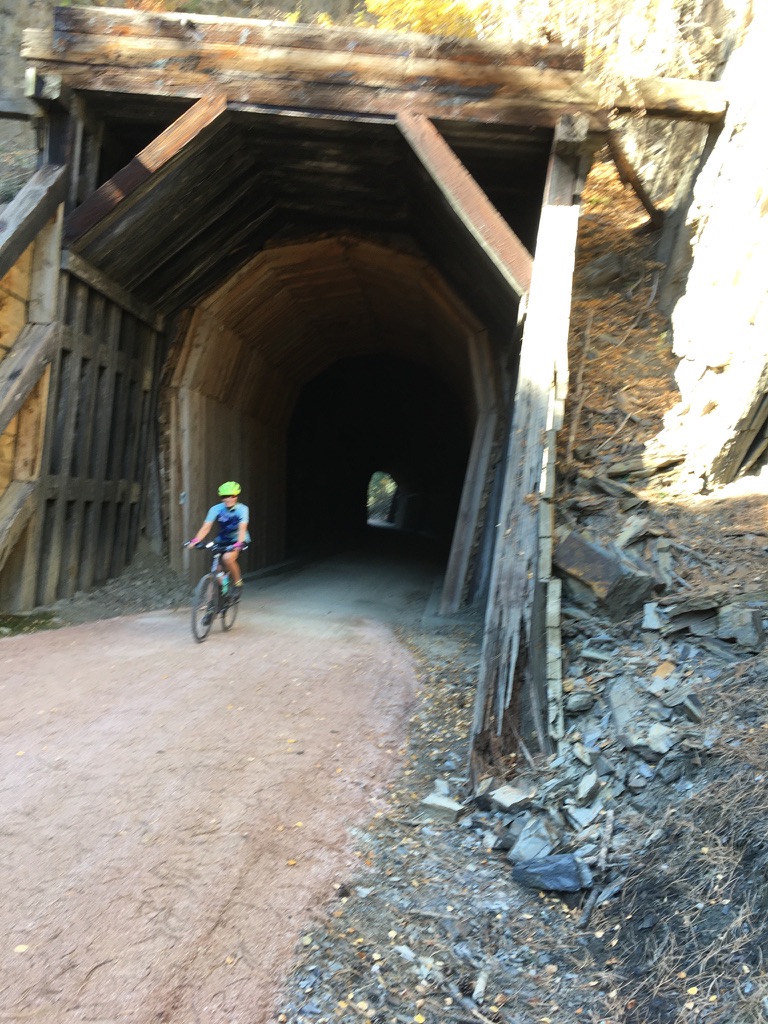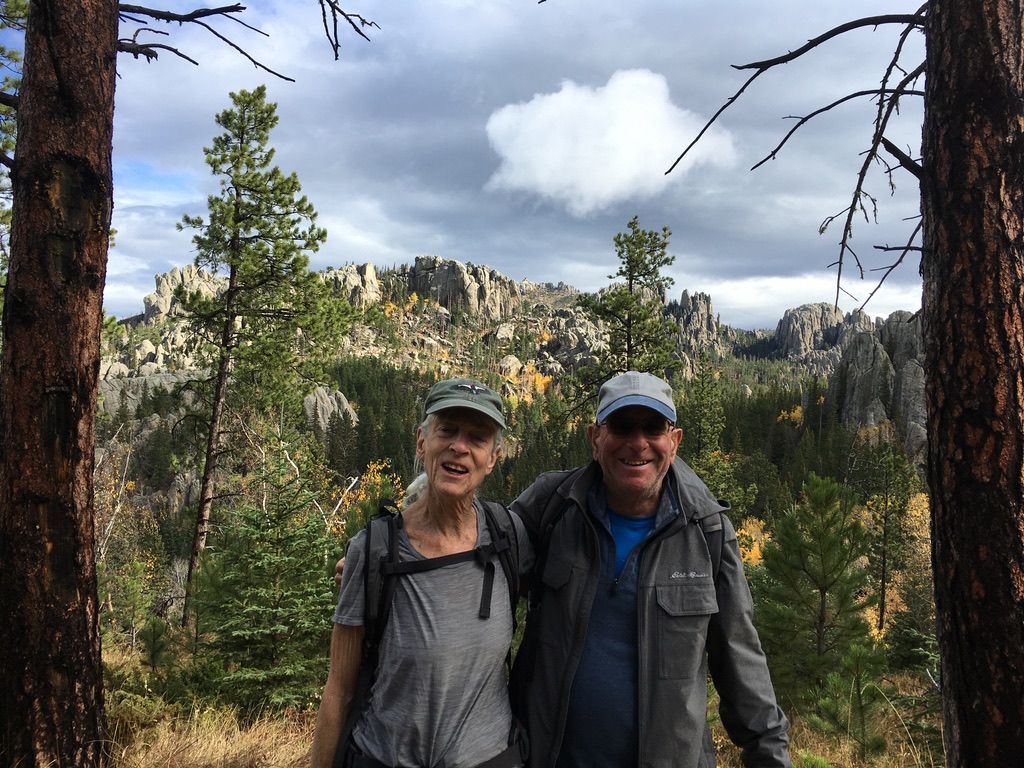In January, 2021 Carl and Joanna started planning a cycling trip on or near the Mickelson “Rails to Trails” route between Deadwood and Edgemont, South Dakota. There was a lot of initial interest among friends that had formed around Denver bicycle rides that Joanna had been organizing, and ultimately five of us completed the trip. Word came down that the southern part of the trail didn’t offer the beauty that the upper three quarters did, so in the end we rode one day through Spearfish Canyon on smooth pavement with a nice shoulder while sharing the road with motorists, two days on the northern part of Mickelson Trail using Deadwood as our base, and two days on the central part of the trail using Custer as our base. We had nearly ideal weather the 4th through the 8th, with temperatures between 70 and 80 degrees and some wind but nothing too daunting. On the 9th of October we awoke to rain early in the morning, and had already decided that it would be a day better suited for a hike.
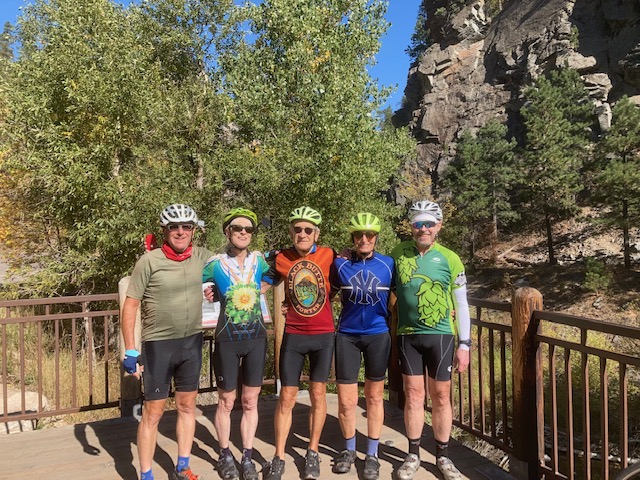
October 4th: On Monday we took a short drive to Spearfish, South Dakota from Deadwood and enjoyed a 45-mile out-and-back ride up Spearfish Canyon, a designated scenic byway along Spearfish Creek, with just under 2,000 feet of climbing. Along the way I stopped to take lots of pictures. Howard had a flat along the way – our only mechanical incident of the trip.
October 5th: On Tuesday we rode south along the Mickelson Trail along well-maintained crushed limestone, starting in Deadwood. The overall ride covered about 41 miles (out and back) with 2,300 feet of climbing.
October 6th: On Wednesday we rode north from Hill City, where we encountered several old railroad tunnels.
After our ride on Wednesday we moved our base from Deadwood to Custer. Both towns were cultural curiosities for those of us from urban environments. Once thriving on mining and timber, these small communities are now hubs for local farmers and depend on tourism in the summer. Because it was late in the season, some restaurants, shops, and other businesses were closing down for the winter. The souvenir shops offered t-shirts, posters, beer and whiskey glasses, coffee cups, and caps with right-wing slogans. We stayed in a quaint motel (The Chalet) built in 1937 that had very few modern conveniences but had a hard-working, very friendly staff and provided a delightful stay.
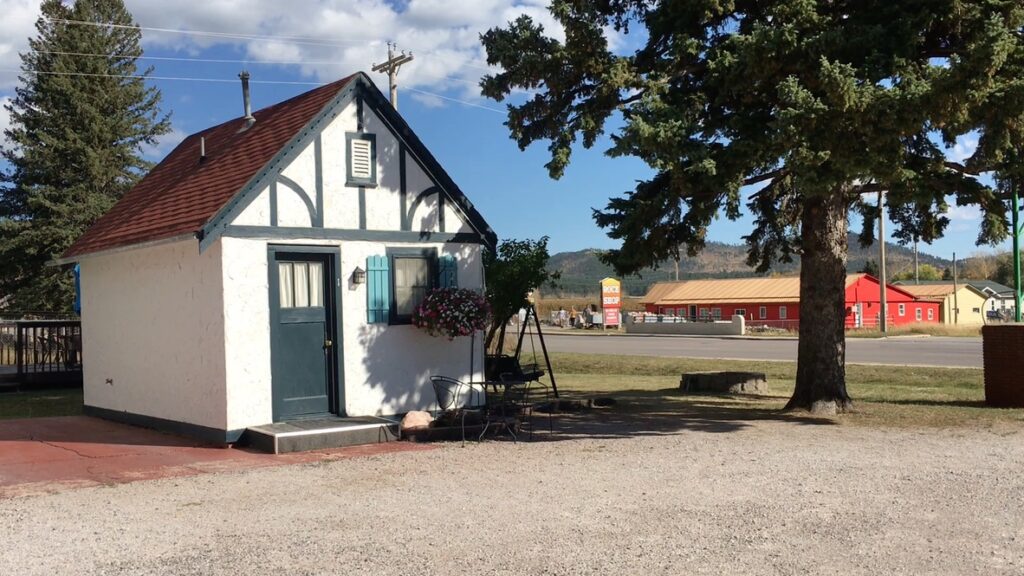
October 7th: Thursday’s ride found us pedaling south from Custer. I managed to take some video of Howard, Carl followed by Joanna, and Carl and Joanna together ascending on the trail, along with photos of a rusted old car, an abandoned lime processing plant, a buffalo herd (probably domestic), and lots of picturesque rock outcroppings. The granite cliffs and rock formations are outstanding features of the Black Hills.
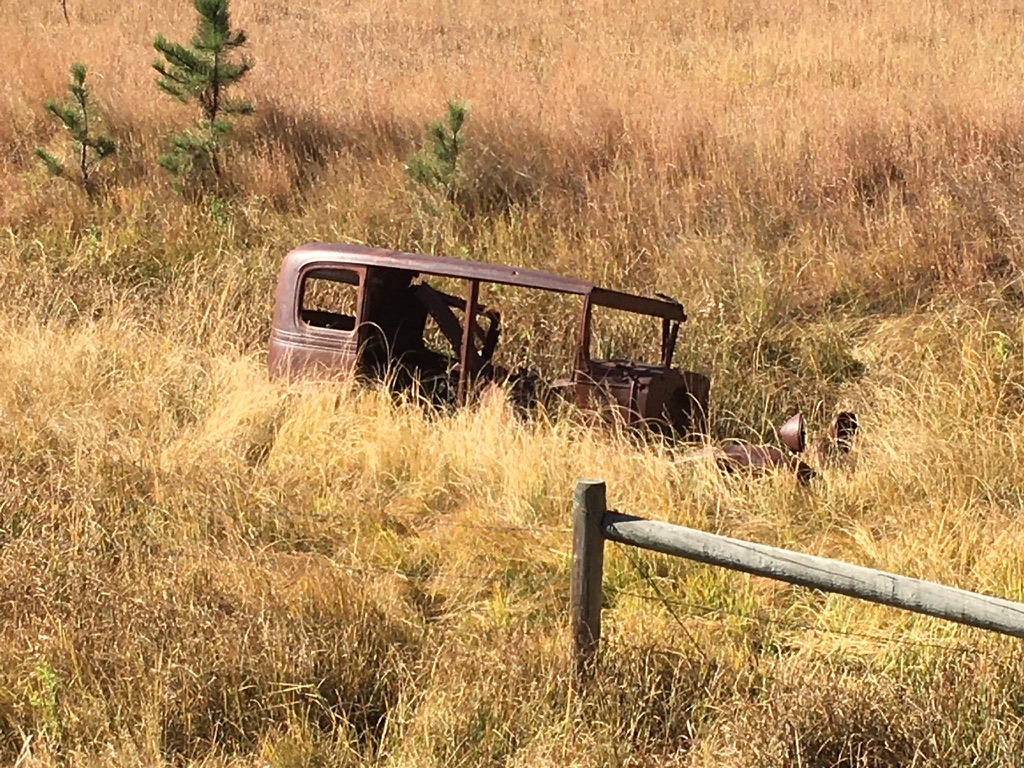

Is this what the car to the left used to look like? 





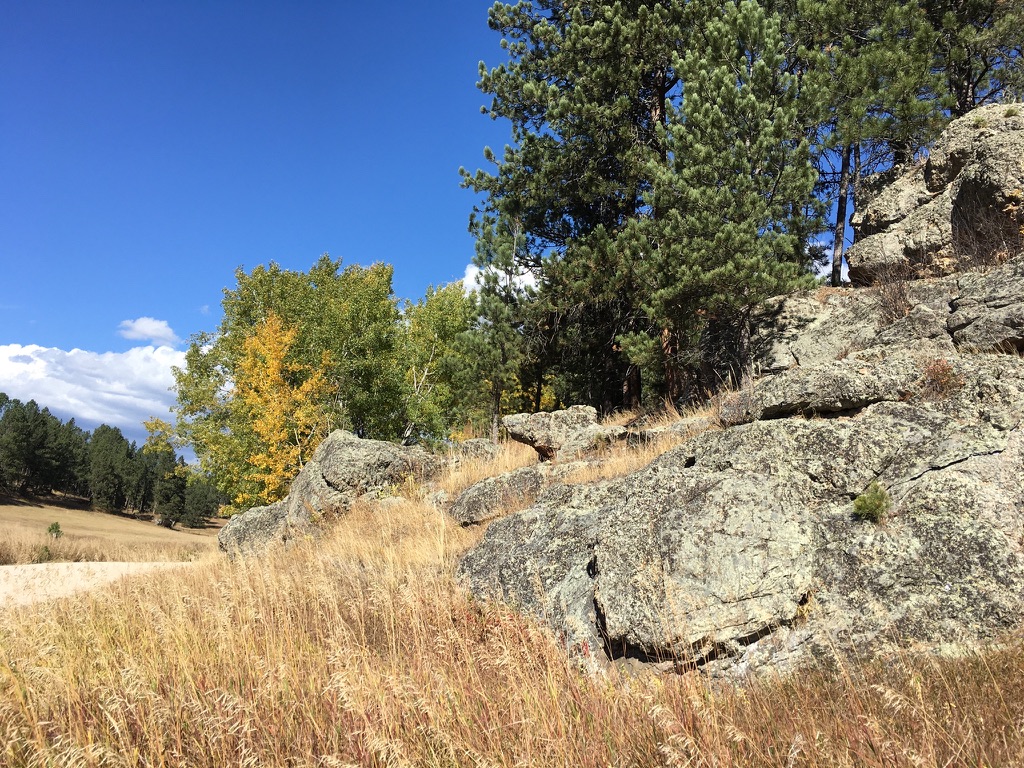

October 8th: Friday was our last day of riding. We rode north out of Custer to Hill City, then back into Custer. It was our shortest day, with only 32.6 miles, but it turned out to be a windy day with more climbing that we expected. We considered taking a spur to Crazy Horse Memorial but opted to go back to Custer and enjoy a celebratory meal instead. We got a pretty good view of the unfinished monument from the trail. Sadly, my iPhone camera did not capture the view very well. In hindsight I wish we had taken the time to ride to the memorial.




If you look closely you can see the profile of Crazy Horse. This is his unfinished monument.
October 9th: Knowing that Saturday was going to be cold with intermittent rain, and having heard that Custer State Park was a great place to hike, we listened to Barbara as she presented a great option to take a seven-mile hike up to the top of Black Elk Peak. We had considered a songwriters’ festival in Deadwood but decided against the fifty mile drive back to that town and were not taken by the thought of sitting inside all day. Speaking personally, I had just returned from a week-long music festival in Kansas in September and was enjoying the change of pace. I was reminded on the hike of a book I read in 1973 or 1974 called Black Elk Speaks by John G. Neihardt, which was later released as The Sixth Grandfather after Raymond J. DeMallie, an Indiana University professor who has studied Lakota by linguistic and cultural sources, provided an introduction, analysis and notes that were intended to address what were considered inaccuracies and misrepresentations in the original book. I don’t know, but I doubt if the peak we hiked is named for the the Ogala holy man upon whom Neihardt’s book is based. I do know that I enjoyed reading the book when I was 23 or 24 years old, and I enjoyed the hike with my friends. An observation deck had been built at the top which afforded great panoramic views that would have been even better if the sun had been out and the wind had not been so cold (but who’s complaining?). Panorama 1. Panorama 2.
I think I can speak for all five of us when I say it was a great trip. We even found good food in Spearfish, Deadwood, and Custer. Here is more information on the Mickelson Trail, Spearfish Canyon, Deadwood, Custer, and Custer State Park. I will offer this editorial comment. While we were in South Dakota the Pandora Papers became public. South Dakota was named along with certain Caribbean islands and other offshore entities where oligarchs, billionaires, celebrities, corrupt politicians, and tax evaders shelter their ill-begotten wealth through legal loopholes and intentionally slanted legislation. South Dakota has a known corrupt, deluded, self-serving, dishonest governor who is harming the public interest in that state and I have been questioned about my choice to support the South Dakota economy by vacationing there. This is a legitimate question and one that I did not consider before making my plans. On the other hand, I like to think that much of the money I spent on this trip ended up in the hands of hotel/motel housekeepers, the cooks and wait staff in restaurants, the people who maintain the roads and trails we cycled on, the rangers in the state and national parks, and other hard-working people who depend on tourists to get by from day to day. I think staying away from South Dakota would hurt them but would not touch Kristi Noem. The sinister mechanisms illuminated in the Pandora Papers will keep her forever ensconced in her luxury palaces.





